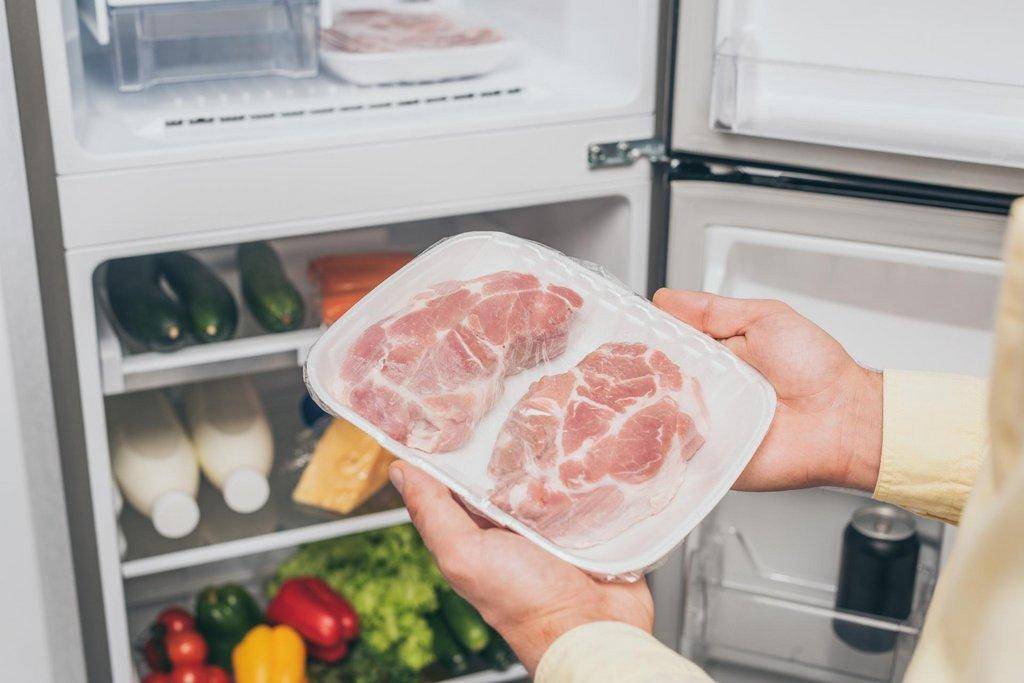By Teresa Hunsaker, Utah State University Extension Family and Consumer Science Educator
The recent wind storms have left many people without power. The potential loss of food in refrigerators and freezers is a cause for concern. Consider these tips:
- Keep refrigerator and freezer doors closed. Open them briefly only if necessary.
- Watch for notifications from the power company about when power might be restored. Knowing a time estimation will help you make plans. If full, most freezers will keep food frozen for 48-60 hours, depending on the type of food and the beginning freezer temperature.
- Place a thermometer in the front of the fridge or freezer to check temperatures after 24 hours without power.
- Know the highest temperature food has reached, which is the most important factor in determining whether or not it is safe. If power is not back on after 48-60 hours, watch for temperatures holding food between 40 to 44 F.
- If you do not have a generator and your freezer is not likely to be operating within a day, you may need to move your frozen foods to a working freezer. Consider asking a friend or neighbor if they have freezer space. You might also check into moving your freezer’s contents to a local freezing plant, church freezer, school freezer or even a meat locker. To move your food, put it in insulated boxes or between thick layers of newspapers and blankets, depending on how far you have to go.
- Another option to help keep foods frozen is to place dry ice in your freezer. To locate a source, do a search for “dry ice” or “carbonic gas.” Some grocery stores carry dry ice. Handle it quickly, and always wear heavy gloves to prevent it from burning your hands. When purchasing dry ice, have it cut into small, usable sizes. Do not try to cut or chip it yourself. A 50-pound block of dry ice is enough to protect solidly frozen food in a 20-cubic foot freezer for three to four days. A 25-pound block should hold the temperature of a half-full, 10-cubic foot freezer below freezing for two to three days.
- Place heavy cardboard on top of packages of frozen food in each compartment of your freezer and place dry ice on top of the cardboard. Close the freezer and do not open it again until you need to replace the dry ice or the power comes back on.
- Provide extra insulation for your freezer by covering it with blankets or quilts. Placing packing material or crumpled newspapers between the cabinet and the blankets will also help. Be sure coverings are away from air vents on the outside of the freezer. The power may come on unexpectedly and ventilation will be needed. The harmless gas given off by dry ice needs to escape. Dry ice is carbon dioxide in its solid form. It evaporates rather than melts and leaves no liquid. You may notice an off odor caused by carbonic acid, which is formed by the dry ice and moisture in the freezer. It is harmless. Simply leave the freezer door open for a few minutes to let it escape.
Some thawed foods can be re-frozen. However, the texture will not be as good. Other foods may need to be discarded. Here are some guidelines:
Meat and Poultry: Re-freeze if the freezer temperature stays at 40 F or below. Check each package and discard if there are signs of spoilage such as an off color or off odor. Discard any packages that are above 40 F (or at room temperature).
Vegetables: Re-freeze only if ice crystals are still present or if the freezer temperature is 40 F or below. Discard packages that show signs of spoilage or that have reached room temperature.
Fruits: Re-freeze if they show no signs of spoilage. Thawed fruits may be used in cooking or making jellies, jams or preserves. Fruits survive thawing with the least damage to quality.
Shellfish and Cooked Foods: Re-freeze only if ice crystals are still present or the freezer is 40 F or below. If the temperature is above 40 F, throw these foods out.
Ice Cream: If partially thawed, throw it out. The texture of ice cream is off after thawing. If the temperature rises above 40 F, it could be unsafe.
Creamed Foods, Puddings and Cream Pies: Re-freeze only if freezer temperature is 40 F or below. Discard if the temperature is above 40 F.
Breads, Nuts, Doughnuts, Cookies and Cakes: These foods re-freeze better than most. They can be safely re-frozen if they show no signs of mold growth.
To be prepared for a power emergency, find out where the nearest commercial or institutional freezers are. Locate a source of dry ice. During the seasons when power failures are common or if you know the power will be off, it is good insurance to run the freezer between -10 F and -20 F. The colder food freezes, the more slowly it thaws.

